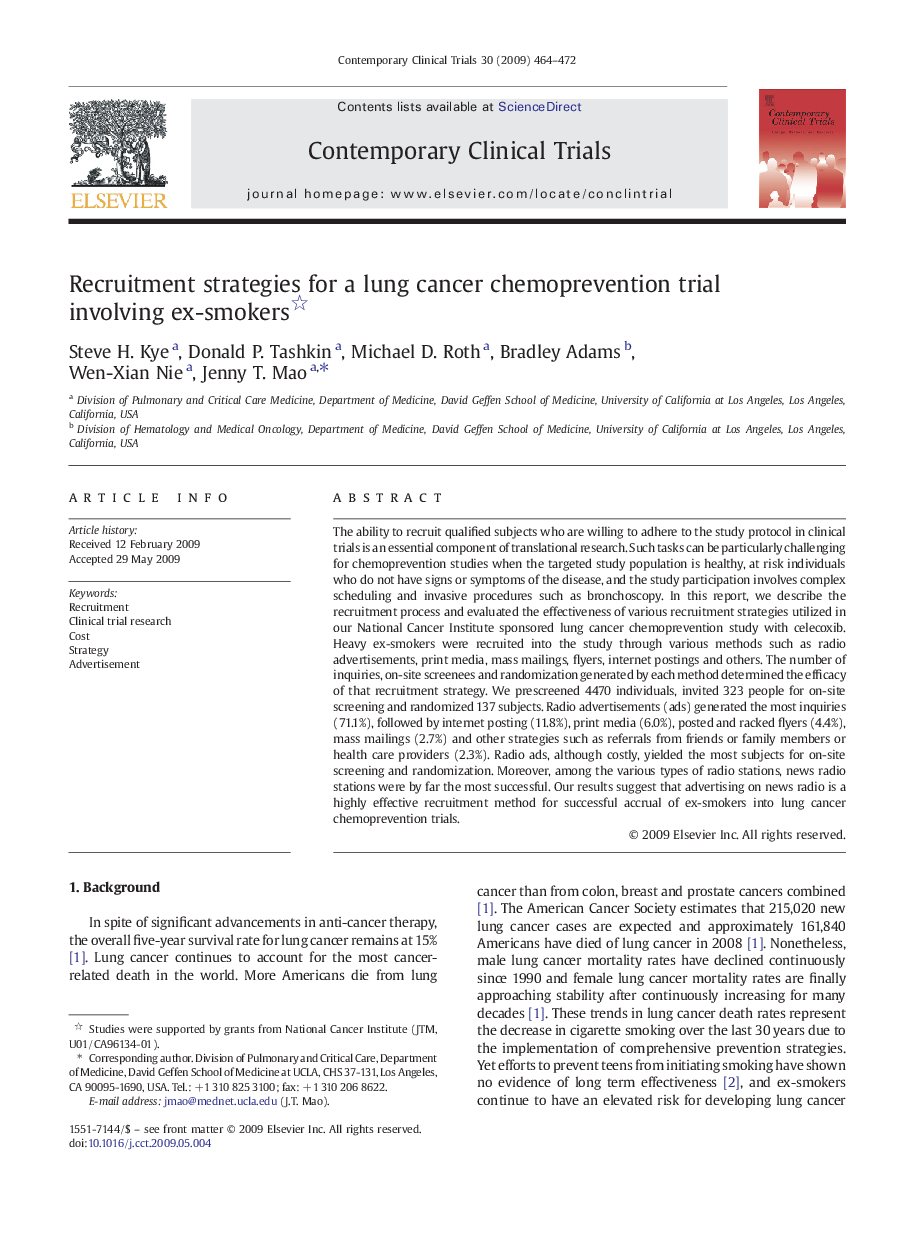| Article ID | Journal | Published Year | Pages | File Type |
|---|---|---|---|---|
| 3463196 | Contemporary Clinical Trials | 2009 | 9 Pages |
The ability to recruit qualified subjects who are willing to adhere to the study protocol in clinical trials is an essential component of translational research. Such tasks can be particularly challenging for chemoprevention studies when the targeted study population is healthy, at risk individuals who do not have signs or symptoms of the disease, and the study participation involves complex scheduling and invasive procedures such as bronchoscopy. In this report, we describe the recruitment process and evaluated the effectiveness of various recruitment strategies utilized in our National Cancer Institute sponsored lung cancer chemoprevention study with celecoxib. Heavy ex-smokers were recruited into the study through various methods such as radio advertisements, print media, mass mailings, flyers, internet postings and others. The number of inquiries, on-site screenees and randomization generated by each method determined the efficacy of that recruitment strategy. We prescreened 4470 individuals, invited 323 people for on-site screening and randomized 137 subjects. Radio advertisements (ads) generated the most inquiries (71.1%), followed by internet posting (11.8%), print media (6.0%), posted and racked flyers (4.4%), mass mailings (2.7%) and other strategies such as referrals from friends or family members or health care providers (2.3%). Radio ads, although costly, yielded the most subjects for on-site screening and randomization. Moreover, among the various types of radio stations, news radio stations were by far the most successful. Our results suggest that advertising on news radio is a highly effective recruitment method for successful accrual of ex-smokers into lung cancer chemoprevention trials.
